Tips & Tricks For Creating A Professional Website With Webflow
In the digital age, having a professional website is essential for businesses of all sizes. Developing a website can be daunting, but with Webflow's cutting-edge tools and resources, it doesn't have to feel like mission impossible. Read on for tips and tricks to create an elegant and impactful website with Webflow that will set you apart from the competition.
.avif)
Creating an impressive online presence requires more than just assembling a few pages – it requires thoughtfulness, creativity, and technical know-how. With Webflow, users have the power to take their dreams of a flawless site and turn them into reality. This comprehensive platform offers endless customisation options and a multitude of features so users have complete control over every aspect of their design so they can create something unique. Plus, its intuitive visual canvas makes creating a website easier than ever before – further boosted by its low coding environment meaning you don’t need to be a coding genius to create a bespoke website!
Deciding On Your Website's Purpose
Before getting started with your website, it's important to decide on its purpose. Is it for business, pleasure, or something else? This will help you determine the type of content you'll be developing and how you want to present that material. It'll also help with designing a layout and structure that best suits your purpose.
Once you've decided on the purpose of your site, it's time to start planning out the content. Make sure all the information is organised in a logical way so visitors can quickly find what they're looking for. Also consider adding visuals such as images, videos, or infographics to enhance the user experience.
Finally, consider using tools like Webflow to help create a professional-looking and functioning website with minimal coding knowledge. With their visual canvas and vast library of templates and components, Webflow makes it easy to create an attractive website in no time.
If you’re liking the sound of all of this but are a little hesitant about creating your website yourself, don’t worry - Paddle Creative is here to be your helping hand. At the heart of Paddle Creative is our love for designing bespoke, functional websites and Webflow is our chosen platform to do so.
Paddle Creative is a recognised 'Webflow Expert,' a status designated for the best and most trustworthy web developers that use the Webflow platform. Webflow's incredible capacity to increase design flexibility is its greatest asset and it is thanks to Webflow's incredible versatility that Paddle Creative is able to tailor the website we create specifically to your company and needs. You can explore our process, from discovery to launch and growth, on our Webflow Website Design & Development page.
Back to the useful tips and tricks for creating a professional website with Webflow…
Choosing A Domain And Web Hosting
Setting up your online presence requires you to get your ducks in a row, and that starts with choosing a domain name and web hosting. It's important to select the right option if you want to create a professional website. If you’re new to web hosting, take a look at this quick What is Website Hosting resource for a simple rundown.
First things first, picking out a domain name is like the cherry on top of your website sundae. It should be easy to remember, succinct, and related to what your website is about. You can purchase one from an accredited registrar such as GoDaddy or Namecheap - just make sure it isn't already taken!
Once you've chosen the perfect domain name, it's time to find reliable web hosting. Luckily, if you’re building your website with Webflow, Webflow will host your site for you! Webflow uses AWS hosting and it truly is the best. What’s more is that every site hosted with Webflow gets SSL for free, on every site. So you enjoy better SEO and your customers and site can relax knowing your website is secure.
At Paddle Creative, we use Webflow’s hosting services because they really are the best of the best and trust us, we’ve tried them all. It’s important to note that Webflow offers different hosting options depending on your needs and so you should be sure to do some research before you choose. We’ve written a resource that goes into detail about Webflow hosting plans, which you might find helpful.
Exploring The Webflow Design Interface
Using Webflow to design a website for your business is like driving a race car. It has all of the power and features you need, but also requires a bit of practice to master. Exploring the design interface is key in understanding how to make this powerful tool work for you.
When it comes to navigating the Webflow design interface, there are a few key points to keep in mind:
- Get comfortable with the different elements that make up the interface and their functions.
- Try out various options and see what works best for your website's purpose.
- Experiment with customising elements to get the look and feel you want.
To help get started on this journey, it's important to familiarise yourself with where everything is located within the interface. Take some time to explore in-depth features such as styling, animation, interactions, data management and more. The more familiar you become with these tools, the easier it will be for you to create an amazing website that looks professional and stands out from your competitors.
You can also take advantage of tutorials created by Webflow experts or even watch YouTube videos for help on specific topics related to creating a website using Webflow. What’s more, Webflow has Webflow University to help its users get comfortable with using the platform. With just a little bit of time and effort spent learning about this platform, you'll have all the tools necessary to create an amazing website that meets your needs perfectly!
Webflow Experts are as good as it gets when it comes to experience with Webflow so with the help of a Webflow Expert you can be sure you’ll be enlisting the best web developers for your needs. You can find them easily with a Google search, or take a look at Webflow’s matchmaking page which - you guessed it - matches you up with a suitable Webflow Expert for your needs.
Psst… Paddle Creative are Webflow Experts - give us a go.
Writing Great Content For Your Website
Writing great content for your website is critical to creating a professional website with Webflow. Content should be interesting and engaging, while also providing visitors with the information they need. It’s important to use language that appeals to your target audience and create content that is easy to understand otherwise you might lose your site visitors' interests.
Having clear navigation and menus helps visitors find what they are looking for quickly. Include headings, subheadings, images, text boxes, and other elements to break up the page so it's easier to read. Also make sure all links are working properly - broken links can be very frustrating for users!
Finally, proofread your content thoroughly before publishing it online. You want your website to look professional and presentable, so double-check for typos and grammar errors. This will ensure that you create a high-quality website that people will want to visit again and again.
TIP: Ask someone else to proofread your content before publishing it online - two heads are better than one!
Going Live With Your Website
Launching your website can be an exciting and nerve-wracking experience. You've spent time and energy crafting the perfect website for your business or portfolio, so you want to make sure that it's ready for the public. Similar to a band debuting a new single, you want to make sure that everything is pitch perfect before going live with your website.
Before taking this step, go over each page and double-check that all of the images, videos, and content are accurate and up-to-date. A great way to ensure that everything looks good is by asking a friend or family colleaguemember to review the website before launching it - their fresh view is more likely to spot things you won’t. It's also important to check any code snippets and make sure they're working properly so that visitors don't experience any issues when navigating through your site. At Paddle Creative, we use a tool called Markup to allow users to leave feedback on the Webflow websites we build.
Finally, once you're sure everything is good to go, it's time for launch day! Take some time beforehand to spread the word on social media or email contacts about the new website; this will help get people excited about what you have made and ensure maximum visibility when it goes live. With a few simple steps, you'll be able to confidently launch your professional website with Webflow!
We at Paddle Creative have a 25-point process for going live with websites on Webflow. It ensures that we haven’t left any loose ends, everything is functioning as it should, the website is functional on PC view and smartphone, and everything generally looks professional. Ensuring you have your own faultless process for going live will play a vital role in your site success and growth.
Frequently Asked Questions
What Are The Best Practices For SEO On A Webflow Website?
Creating a professional website with Webflow can be an exciting way to share your business or products online. But, if you want to attract the right kind of attention and make sure people can find your website, you need to understand the basics of SEO. Below we’ll have a look at some of the best practices for optimising your Webflow website for search engine traffic. This Beginners Guide to SEO resource might be of use to you as well.
When it comes to SEO on a Webflow website, one of the most important things is making sure that all of your content is properly indexed by search engines. This means optimising titles and headers, adding meta descriptions, and including keywords throughout your page content. This will help ensure that when someone searches for terms related to what you offer, they'll be able to find your page easily.
Another essential element in SEO is having a good linking structure between pages on your site. Internal links are especially important as they tell search engines which pages are connected and how they should be weighted in terms of relevance and authority. Additionally, outbound links to high-quality sources help build trust with both users and search engine algorithms alike.
These are just some of the best practices for SEO on a Webflow website – but there's much more involved in creating a successful online presence. From leveraging social media channels to using analytics data for keyword optimisation down the line – there's no shortage of strategies you can use to get visitors to your site and keep them coming back time after time.
How Can I Monetise My Website?
Gaining financial benefit from a website is a dream come true for many. With the right strategies and techniques, it is possible to monetise your Webflow website and make it an income-generating platform. Let's explore how this can be achieved.
One of the most effective ways to monetise a Webflow website is by joining an affiliate program. This involves partnering with brands and businesses that are related to the topic of your website, thereby allowing you to earn commission on every sale generated through your referral links. Additionally, you can also offer sponsored content on your site and charge advertisers for featuring their products or services.
Another excellent way to monetise your Webflow website is by creating digital products such as e-books, courses, templates, or other downloadable items that can be sold directly from your website. You can also offer premium membership plans or subscription services on your website which will give users access to exclusive content not available elsewhere.
These are just some of the options available for monetising your Webflow website but there are so many more possibilities out there. With some creativity and hard work, you could soon be reaping the rewards of having a successful online business.
What Are The Best Tools For Website Analytics?
Analysing the performance of a website is like navigating through a maze - it's no easy task. Fortunately, there are tools available to simplify and streamline this process. With the right toolset, website owners can make informed decisions that will help increase their visibility and profitability. So what are the best tools for website analytics?
This question comes with a few answers, depending on your individual needs and preferences. Google Analytics is one of the most popular choices for tracking website performance. It offers detailed reporting, such as audience demographics, bounce rates, and conversion rates. Additionally, you can use Uptrends Web Monitors to ensure your website is always up and running. This monitoring system also sends out alerts when any technical issues arise on your site so you can get to fixing them before they become too problematic.
For more advanced analytics capabilities, tools like Hotjar or CrazyEgg offer extensive features that allow you to track user behaviour and engagement levels on your website. You can also use A/B testing software like VWO or Optimizely to test different versions of your webpages and see which converts better with visitors. All of these tools provide valuable insights into how well your site is performing so you can take actionable steps to improve it over time.
As we’ve mentioned, there are a few options out there so it’s important to do your research to help you determine which is the most suitable for your analytics. You may be familiar with GA4 and Universal Analytics, these are both versions of Google Analytics, but you might not be aware of the differences between the two. We’re here to help - this resource uncovers The Difference Between GA4 and Universal Analytics and so this may be a good place to start your website analytics tool search.
Are There Any Cost-Effective Ways To Promote My Website?
Are you looking for cost-effective ways to promote your website? You're not alone. Many businesses have similar challenges when it comes to marketing their website and finding the right balance between budget and results.
Luckily, there are a number of solutions out there that can help you get the job done without breaking the bank. Social media is a great place to start, as it offers an easy way for you to spread the word about your website and reach potential customers. Additionally, SEO (Search Engine Optimisation) can be used to drive more targeted traffic to your site by helping it rank higher in SERPs (search engine results pages).
Finally, don't forget about traditional advertising methods such as print ads or radio spots – these can still be effective in getting your message across if done correctly. By combining different types of promotion with a well-crafted marketing strategy, you can create a powerful online presence without spending too much money.
How Can I Make Sure My Website Is Secure?
Security is an important part of having a professional website. You don't want hackers getting access to your data, customers' information, or anything else on your site. So what can you do to make sure that your website remains secure?
The first step is to obtain a valid SSL certificate. This will encrypt any data that is sent over the internet and help keep it safe from anyone trying to access it without permission. Additionally, you should ensure that all of the software and plugins on your website are up-to-date so that any security vulnerabilities are patched quickly and efficiently. The good news is that Webflow hosting comes with a SSL-certificate integral to the platform.
Finally, you should also think about using two-factor authentication for users who need to log in to their accounts. This will require them to enter both a username and password as well as an additional code sent via text message or email before they can gain access. By following these steps, you can be sure that your website is kept secure and its visitors have peace of mind when browsing or making purchases online.
Conclusion
Creating a professional website with Webflow can be an intimidating task, but with the right tips and tricks, it doesn't have to be. From understanding best practices for SEO to analysing website performance with the right tools, there are plenty of ways to make sure your website is optimised for success.
While understanding and effectively using Webflow is an important part for creating a success website, what comes after creation is just as important. Monetising your site, promoting it in cost-effective ways, and making sure it's secure are all equally essential steps that should not be overlooked. Taking the time to ensure these areas are covered before launching your website can help you avoid costly mistakes and put you on the path to success.
So while building a great website with Webflow is certainly important—and perhaps a little intimidating—remember that taking care of the other details behind-the-scenes can make all the difference in ensuring its success. With some knowledge and determination, anyone can create an amazing website using Webflow!
If you want to discuss designing and developing a Webflow website, get in touch!


.svg)

.svg)



.jpg)

.jpg)
.jpg)

.jpg)
%20(1).jpg)
.jpg)
%20(1).jpg)


.jpg)

%20(1).jpg)
%20(1).jpg)
%20(1).avif)



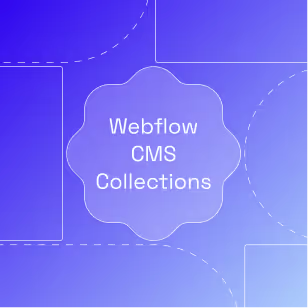



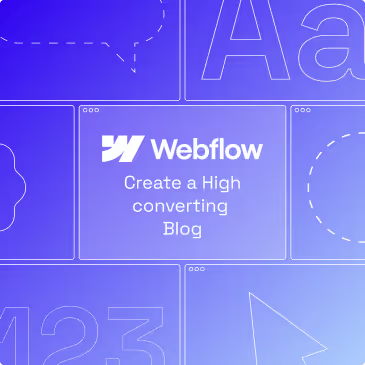

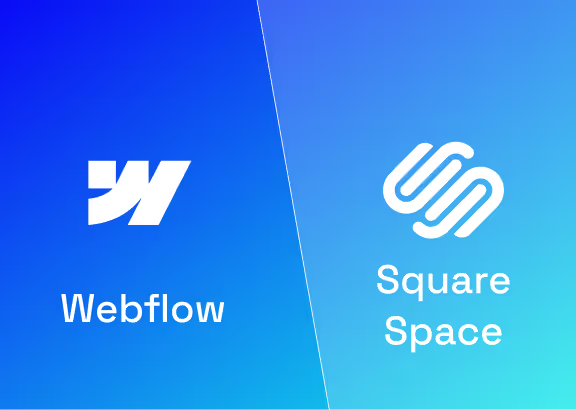


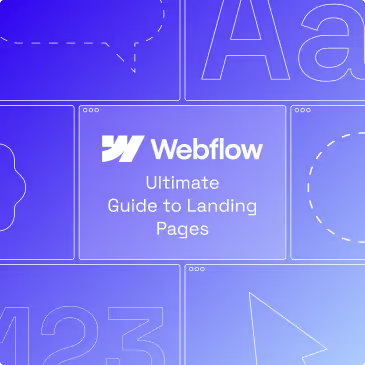
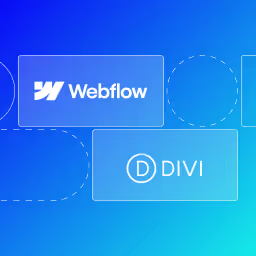


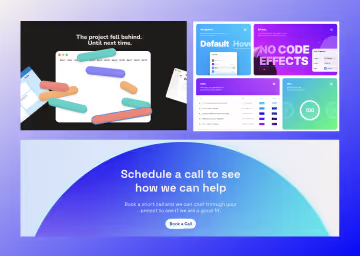






%20(2).avif)
.avif)



.avif)
.avif)
.avif)
.avif)
.avif)
.avif)
.avif)
.avif)
.avif)
%2520(1).avif)
%2520(1).avif)
%2520(1).avif)
%2520(1).avif)
%2520(1).avif)
%2520(1).avif)
%2520(1).avif)
%2520(1).avif)
.avif)
.avif)

.avif)






.avif)




